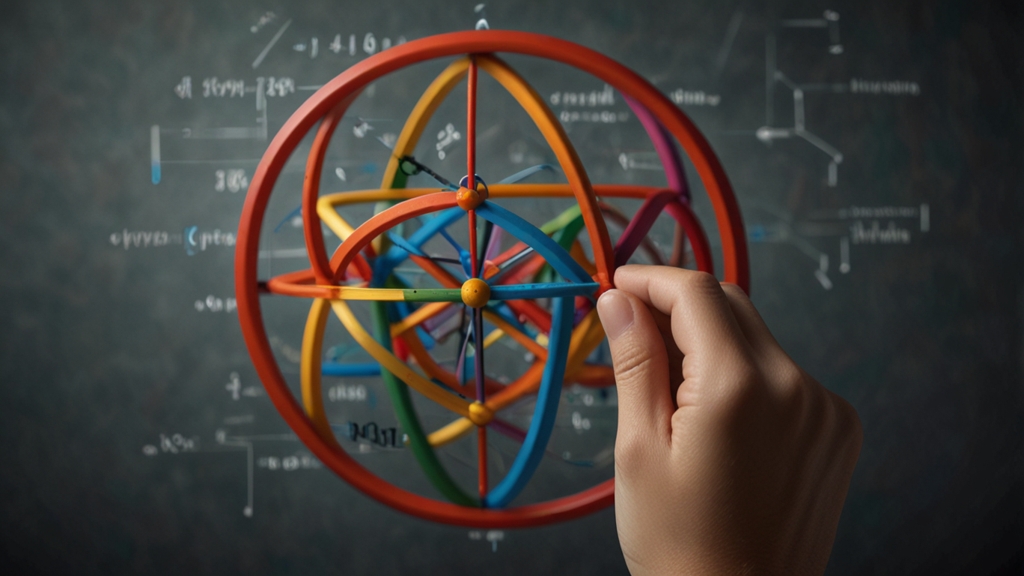Beyond Geometry: The Amazing Applications of Math in Real Life
Mathematics has always been revered as the cornerstone of science and technology. Beyond the confines of geometry and algebra, math finds applications in a myriad of fields, influencing our daily lives in ways we often overlook. This article explores some of the fascinating ways math shapes our world, demonstrating its indispensable role in various real-life scenarios.
Engineering and Architecture
The beauty of grand bridges, skyscrapers, and intricate road systems is no accident. Engineers and architects rely heavily on math to bring these concepts to life. From calculating load distributions to ensuring structural integrity, mathematics forms the bedrock of safe and sustainable construction.
“Mathematics possesses not only truth, but supreme beauty,” - Bertrand Russell
For example, the use of geometric principles ensures that structures maintain balance and withstand natural forces like wind and earthquakes. Computational fluid dynamics, a branch of fluid mechanics using mathematical models, is crucial in optimizing the design of vehicles and airplanes for aerodynamics.
Healthcare and Medicine
Mathematics plays a pivotal role in the advancement of healthcare. In medical imaging, algorithms derived from higher mathematics help generate clearer images from MRI and CT scans, aiding in accurate diagnoses. Additionally, predictive models in epidemiology use statistics to predict the spread of diseases and the impact of interventions, playing a crucial role in managing public health crises.
“Medicine is a science of uncertainty and an art of probability.” - William Osler
Drug development also heavily relies on mathematical models to simulate biological processes and predict the behavior of compounds, streamlining the path from the lab to the pharmacy. Biostatistics is another crucial area where mathematical analysis is key to designing and interpreting medical research, ensuring new treatments are backed by robust evidence.
Finance and Economics
In the world of finance and economics, math is the language that quantifies market dynamics and risk management. Concepts like calculus and linear algebra help in modeling economic theories, while statistics play a vital role in making market predictions. Without math, the complexities of derivatives, interest rates, and stock market behaviors would remain enigmatic.
For instance, the Black-Scholes model, a fundamental tool in financial engineering, uses differential equations to determine the pricing of options. Furthermore, actuarial science employs probability and statistics to forecast future events and assess risk, which is crucial for insurance companies.
Technology and Computer Science
The rapid development of technology and computer science is deeply rooted in mathematics. Algorithms, the heart of programming, are based on abstract mathematical concepts. Machine learning and artificial intelligence utilize statistical models to enable machines to learn from data and make decisions.
“Mathematics is the key and door to the sciences.” - Galileo Galilei
Cryptography, the backbone of cybersecurity, relies on number theory and algebra to encrypt and protect sensitive information. Error-correcting codes, used in data transmission and storage, ensure that information is accurately received and retrieved even in the presence of noise or corruption.
Environmental Science
Mathematics also contributes significantly to environmental science. Mathematical models help predict climate change, track pollution levels, and understand ecological dynamics. By analyzing data patterns, scientists can create predictive models to assess the impact of human activities on the environment and devise strategies for sustainable development.
For instance, differential equations are used to model population dynamics in ecosystems, while statistical tools assist in analyzing trends in environmental data, guiding conservation efforts and policy-making.
Conclusion
The applications of mathematics extend far beyond the classroom and traditional geometry. Its principles are woven into the fabric of modern civilization, driving progress and innovation across numerous fields. From ensuring the safety of architectural marvels to advancing medical science, and from securing financial stability to protecting the environment, math is an invisible force that shapes our world. The next time you encounter a complex problem, remember that behind every solution, there's a web of mathematical ingenuity making it possible.










